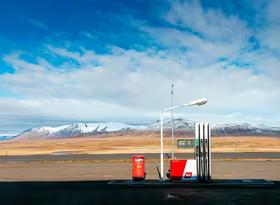
Will NZ’s weak population growth soften demand for cars?
Population growth’s relevance to new car sales
Why does population growth matter in the car market?
Population growth is a fundamental driver of car sales, based on the assumption that a larger population requires a larger fleet of cars. In New Zealand, population growth and growth in the car fleet have often trended in the same direction, but there are also occasions where the two diverge. One example of the two trending together was between 2001 and 2004, when faster population growth occurred at the same time as strong growth in the car fleet.
In Chart 1, we can see that population growth accelerated from 0.6%pa to 1.1%pa between December 2000 and December 2001, while growth in the car fleet lifted from 0.7%pa to 2.3%pa over the same period. Population growth peaked at 2.0%pa in March 2023, while annual fleet growth continued to increase for another year, peaking at 5.2%pa in March 2004.
After weaker population and fleet growth from 2004 to 2012, New Zealand’s population growth picked up again from 2013 to a peak of 2.3%pa in June 2016. Car fleet growth peaked in the same quarter at 7.2%pa. On this occasion, it could be argued that fleet growth picked up first, from early 2012, but it wasn’t until 2013 that the annual growth rate really accelerated.
Per capita growth might not be the best measure
As noted above, despite often moving in the same direction, there have been several periods where population and fleet growth have diverged. Most recently, the COVID-19 pandemic saw New Zealand’s population growth jump to 2.4%pa in March 2020, but fleet growth fell to 0.2%pa in the same quarter.
In this example, the divergence is perhaps explainable by national lockdowns hampering the sale of cars. Nevertheless, events like this one suggest the relationship between population and fleet growth is not straightforward. It is therefore worth considering some similar variables to see if they are clearer drivers of fleet growth.
Growth in the number of households or dwellings is another variable often seen as a driver of car sales. It can be argued that household growth, rather than population growth, is a better metric when assessing the effect on car sales, because people within a household will often have access to the same cars. Growth in the dwelling stock is shown alongside the car fleet in Chart 2.
Another option could be filtering out those people that are too young to drive, such as looking at the growth of the working-age population. Similarly, one could look at growth in employment, on the basis that it filters out ages where people might be less likely to purchase cars. Using employment would also filter out people who might be unlikely to purchase cars for other reasons, such as financial constraints or no requirement to commute.
Chart 3 shows that employment growth has historically trended well with fleet growth, with strong growth in both variables between 2003 and 2004, and again in 2016. Slow rates of growth also occurred simultaneously during the late 2000s and since 2016. However, as with all the other variables considered, there have been times when the two growth rates have diverged, such as 2013, when employment fell sharply, but the car fleet experienced steady positive growth.
In summary, whether comparing the growth in the number of registered cars with population growth, growth in the number of dwellings, or employment growth, there is some relation to car sales, but the relationship is complex and clear conclusions may be difficult to draw.
Latest figures show slow population and employment growth
Population growth remains at 33-year low in June
New Zealand’s population was 5,124,100 in June 2022, growing at just 0.2%pa. The population increase of 12,700 people over the last year was below our forecast and leaves annual population growth at a 33-year low. One of the key drivers of this weakness has been strong migration outflows, as 11,500 more people left New Zealand than entered in the June year.
The working age population, people aged 15-64, has actually shrunk since September 2020 (see Chart 4). This decline has been caused by New Zealand’s aging population, a lack of working-age migrants entering the country, and more recently an exodus of young people as the borders have reopened, fuelled by opportunities for higher wages and lower living costs overseas, as well as pent-up demand to travel.
Employment growth more difficult over the last year
Employment was stagnant in June for the third consecutive quarter, due to a lack of available workers, as shown by the persistence of a very low unemployment rate (see Chart 5). The limited supply of labour is pushing up wages, with growth in the labour cost index accelerating to 5.1%pa in June, the fastest on record.
If labour supply constraints are eased, potentially through an increase in workers arriving from overseas, employment growth could pick up again during 2023. However, even with the government’s recent moves to improve access to foreign workers, we expect that rising interest rates and lacklustre growth in spending will see demand for labour ease first.
It is worth considering that slow population growth in the June period was matched by slow employment growth, so any perceived effect on car sales could be a product of either variable.
Outlook for population and car sales
Feebate noise masks the effect of weak population growth
Weak population growth in the March 2022 quarter was not reflected in first-time car registrations. As part of the Clean Car Discount scheme, a fee to register higher-emissions vehicles took effect on 1 April, which drove a huge volume of registrations in March (see Chart 6).
Since the introduction of the fee at the start of April, registrations have been very weak. It remains to be seen how much of this weakness is a product of purchasing decisions being brought forward to March, and how much is a result of reduced affordability after the imposition of the fee, or other factors that are negatively affecting household spending and business investment. Either way, the effect of slower population growth is masked by the noise in the car market caused by the feebate scheme.
Population growth expected to edge back to 1%pa
In our July forecasts, we reduced our expectations for population growth over the next few years. We expect fewer foreign arrivals, with processing capacity and international interest more limited than initially believed. Additionally, the government has strongly indicated that they will not be significantly easing immigration restrictions, despite calls for easier access to migrant labour by businesses struggling to find workers.
We expect population growth will return to 1.0%pa by June 2025 (see Chart 7). Our forecasts predict New Zealand’s population will hit 5.2m in December 2024 and 5.3m in December 2026.
Will weak population growth reduce the demand for cars?
Arguing that weak population growth will hinder car sales over the next three years is based on sound reasoning, which also suggests the forecast lift in population growth will drive more demand for vehicles in three years’ time. However, there are several factors that are going to have a much more obvious impact on sales in the short term, leaving the effect of population growth difficult to measure.
One obvious factor, which has drastically altered the car market in recent months (and could do so again), is government policy. Government objectives that might require intervention in the car market include increasing public transport usage and incentivising lower-emissions vehicles, such as through the proposed Clean Car Upgrade scheme.
A second short-term factor, which will arguably have a more significant effect than population growth on the car market, is the pressure placed on household budgets by the convergence of several macroeconomic trends, including high inflation, rising mortgage rates, falling house prices, and slowing economic growth. These trends have led to record low consumer confidence in recent months, and consumers who are low on confidence are less likely to make large household purchases, such as a new car.
Other longer-term factors might also have a significant effect on market demand over the next five years. For example, the stickiness of hybrid or flexible working arrangements could limit additional demand for cars, particularly in major urban areas.



















